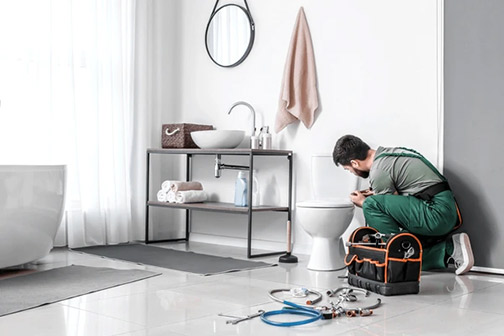
When planning to sell their home, Personal Touch Property Management notes that one of the places homeowners pay the least attention to is their plumbing. Why? Because photos of a newly updated kitchen or an expanded bathroom are more appealing to buyers than any boring information about upgraded plumbing systems.
Yet, if a home’s plumbing is in a bad shape, that is very likely to scare potential buyers and have them running for the hills. Again, why? For the simple reason that plumbing problems are hard to fix, and no intelligent homebuyer wants a home with problematic plumbing systems.
This is why it is a wise decision to spare some attention for your plumbing when planning to sell your home. Doing this is an indirect marketing move that not only helps you win over serious buyers but can offer real advantages when negotiating with those buyers.
So, should you give your home a plumbing makeover before putting it on the market? Here are the signs that you need to.
The top signs that your home needs a plumbing makeover
Corroded pipes
Pipe corrosion can occur in the form of rust, flaking surfaces, or a peeling texture on exposed pipes, especially around pipe joints. Once these signs start to show up, you may be sure that the pipe has lost structural soundness, and more problems will soon follow in the home’s plumbing.
Discolored or smelly water
Depending on the color of the water – brown, yellow, or red – you may have broken or corroded pipes. It is also possible that your water pipes have a lot of buildup inside them. Buyers don’t even need a home inspector to flag this problem; they can spot it themselves.
High water bills
An unexplained hike in your water bill is a reliable sign of hidden leaks in your plumbing system. If the water bill has been increasing but your home’s water usage pattern has not changed, you should have a plumber check your main water line for leaks.
Watermarks and mold
Unsolved water leaks in your home create favorable conditions for mold to thrive. The musty smell of mold and mold spores is something that buyers and home inspectors can easily pick up. Hidden leaks may also leave ugly watermarks on walls, ceilings, and flooring.
Low water pressure
Low water pressure in all, not just one, of your plumbing fixtures is an indication of massive mineral buildup inside your pipes or severe pipe corrosion. Both of these problems will narrow pipe channels, restrict flow, and cause the issues you see in your plumbing fixtures. If you can see this problem, be sure that buyers and home inspectors will also notice it.
Sewage odors
Whether these occur outside or inside the home, this is a serious problem. The two major causes of sewage odors are clogs and blockages in the sewer line or a broken sewer pipe that is leaking raw sewage. This problem is often a precursor to sewage backup inside the home and a good reason for buyers to be wary.
Multiple slow drains
A single slow drain can be overlooked, but if more than one drain in your house is slow, the chances that you have a clogged or blocked sewer line are high. These sewer line problems may be due to minor clogs or the result of major issues such as a collapsed section of the sewer line that needs repair. Since buyers have no way of knowing the root cause of the problem, they may just walk away.
Noisy plumbing
This includes gurgling or bubbling sounds from the drains, which are indicative of trapped air inside the pipes due to clogs and blockages inside the sewer line. They also include water hammers and creaking or thumping sounds, which result from high water pressure, loose pipes, air pockets inside water pipes, and pipe corrosion.
Outdated pipe materials
If your plumbing contains obsolete pipe materials such as galvanized steel, lead, clay, or polybutylene, conduct a plumbing makeover before listing the property. No buyer wants to buy a new home only to be forced to repipe it. Even if you do find a buyer for your home, they will most certainly underprice the house.
How much of your home’s plumbing needs work? Do you need to replace the entire plumbing system or just the damaged sections of the system? The only way to answer this question is to have a professional plumber do a comprehensive inspection of your plumbing.
This inspection uses a wide range of tools and techniques to assess the condition and function of pipes, fixtures, and appliances to detect the root cause of water pressure issues, leaks, clogs, and blockages within the system. This step lets you solve plumbing problems cost-effectively.
Furthermore, a plumbing inspection after these repairs are completed will make your home even more attractive to buyers. By disclosing the details of the inspection report and the plumbing upgrades you have done, you boost buyer confidence and improve the value of your home.

